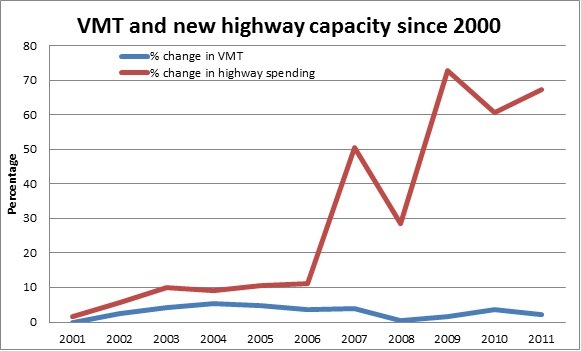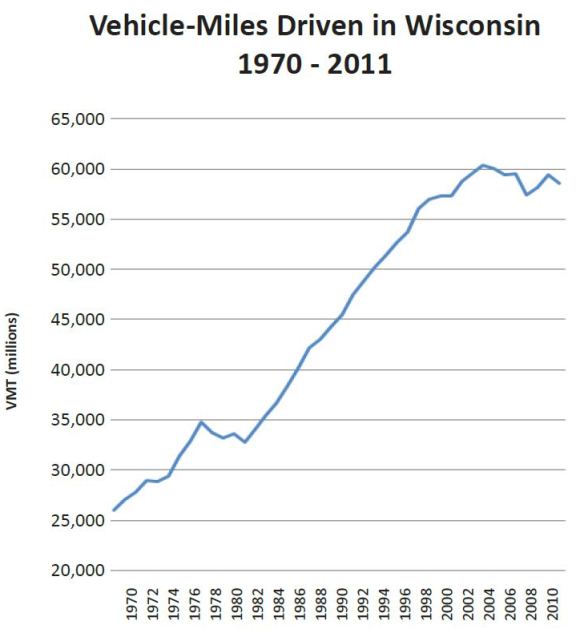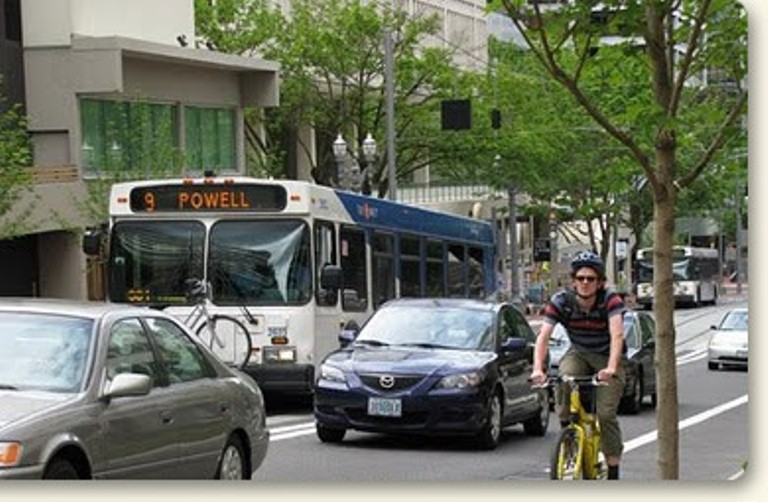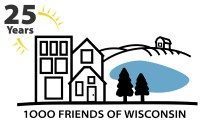Reason 1. We shouldn’t increase highway capacity when we are driving fewer miles.
The state of Wisconsin plans to spend hundreds of millions of dollars over the next two years adding additional capacity to the state’s highway system. These highway expansions are fundamentally out of step with the wants and needs of today’s Americans and ignore demographic information that shows there is a fundamental shift in driving habits.
 Although vehicle miles driven in Wisconsin are falling, the state continues to pour millions of dollars into costly highway expansion. Source: WISDOT, Office of Policy and Budget. Transportation Budget Trends, 2010.
Although vehicle miles driven in Wisconsin are falling, the state continues to pour millions of dollars into costly highway expansion. Source: WISDOT, Office of Policy and Budget. Transportation Budget Trends, 2010.
Young people in America are travelling differently. Over the last ten years, they are driving less, are less likely to own a car or possess a driver’s license and are more likely to bike, walk and take public transit. Surveys show that these shifts in the way Americans want to travel are likely to persist, with many young people making a conscious decision to avoid driving to protect the environment and to save money.

 Wisconsin’s senior population (65 and above) is also booming. Our seniors’ mobility needs will not be met through the expansion of roadways; instead they will require much improved access to transit and pedestrian facilities to maintain a good quality of life.
Wisconsin’s senior population (65 and above) is also booming. Our seniors’ mobility needs will not be met through the expansion of roadways; instead they will require much improved access to transit and pedestrian facilities to maintain a good quality of life.
These costly highway expansions will likely be paid for through increased taxes. Why should citizens who neither want, nor need these costly investments be saddled with the bills? Instead of pouring millions of dollars into highways, we recommend that the state take into account these significant demographic changes and invest in transportation systems which are truly multimodal and environmentally as well as financially sustainable.
A sustainable transportation system consists of:
• Bike and pedestrian facilities which create strong and vibrant neighborhoods and grow local economies.
• Improved mass transit that is fast, safe and efficient.
• High speed rail networks which can carry hundreds of passengers between communities at affordable rates – a single railroad track can carry as many people as a ten-lane highway.
• Prioritizing the maintenance and repair of existing roadways.
• Intelligent transportation systems for roads which improve capacity and safety at low costs, without the need for additional expansion.
Please check back each day for the next reason why WISDOT budget needs to change
